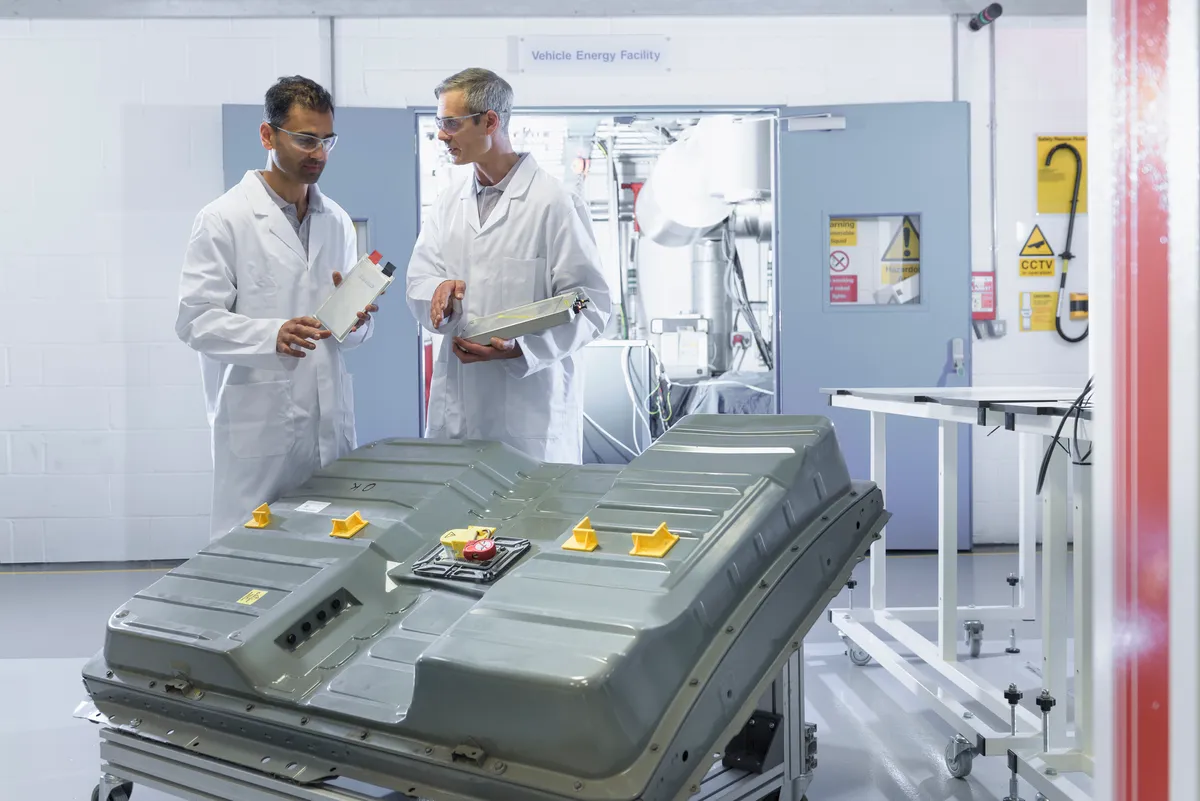Combustion-engine vehicles are viewed as enemies of the environment and it’s easy to see why. By burning fossil fuels, every motorcycle, car, van and lorry adds to air pollution and contributes to climate change. It’s why governments are encouraging drivers to switch to more environmentally friendly electric vehicles (EVs). But while combustion-engine vehicles are an enemy in terms of emissions, they’re currently more of an ally when it comes to recycling.
The lead-acid batteries found in combustion-engine cars are easily and widely recycled, says Dr Daniel Reed, a lecturer in materials chemistry in the University of Birmingham.
“Lead-acid batteries are the most recycled consumer product globally. [The technology is] mature and standardised so it doesn’t matter who makes your battery or which car you own because the battery conforms to certain regulatory specifications.”
Read more about electric cars:
- Could dynamos be installed in electric cars to provide a perpetual source of power?
- Four zippy electric vehicles to power up your commute
- Why can’t you recharge batteries instantly?
The simplicity of lead-acid batteries also helps. They contain relatively few materials (lead for the electrodes, sulphuric acid for the electrolyte, and polypropylene to encase everything), each of which can be easily separated and sold.
The lithium-ion batteries used in EVs are almost the exact opposite.
“In a lithium-ion battery, you’ve got about 10 different components that are interspersed as tiny composite materials, as well as fluorinated polymers, fluorinated electrolytes and fluorinated solvents, all which are a complete nightmare to separate,” says Prof Andrew Abbott a physical chemist at the University of Leicester.
Many of those materials are toxic and some are pyrophoric, so may ignite if they come into contact with air, which makes breaking EV batteries down a complicated and costly process.
The other issue is that many of the materials are ‘critical metals’ (rare-earths, lithium and cobalt, for example), which are vital for making the switch to clean-energy technology but are found in just a few countries. So, the only way to ensure a lasting supply is to recover them from the products they’re used to make.
It therefore seems as if we’re facing further problems by switching to EVs. But it’s not all bad news. Firstly, lithium-ion batteries can be reused. Once they reach a point where they’re no longer able to power a vehicle, they can have a second life as storage devices for energy generated from renewable sources.
Secondly, it is possible to recycle EV batteries, it’s just complicated and, for the time being, not cost effective. But that’s set to change as the number of EVs on our roads increases.

Due to improving battery performance and measures like carbon taxes placed on car manufacturers, it’s estimated we’ll reach price parity for combustion-engine vehicles and EVs by 2023.
“[At that point] we’ll see a big change in terms of adoption,” says Abbott. “The lifetime of the batteries in these vehicles is estimated to be in excess of 10 years. So, in around 15 years the UK will probably be at a point where it has about half a million EVs a year that need recycling.”
By then, the market for EV batteries is expected to be 10 times the size of the current lead-acid battery market. So, there’ll be plenty of incentive to find more cost-effective methods of recycling EV batteries in the intervening years.
But even though it’s in the interests of the manufacturers to ensure a supply of the necessary raw materials, it’s going to take more than just market forces to fully address this issue.
“There’s a need for a degree of legislation to compel manufacturers to make sure these batteries are recycled. The European Union has brought in legislation, which I believe the UK has copied,” says Reed, while acknowledging any legislation can’t be too heavy handed. “There needs to be freedom to innovate on recycling as well as battery manufacture. But the onus needs to be on recycling and recovering materials.”
Read more from Reality Check:
- Spiders: Should I be worried about being bitten by a false widow?
- Microplastics: Are they harming me, and can I do anything about it?
- BMI: We know it’s flawed, so why do we use it?
Innovation on battery manufacture is vital because the complexity and variety of designs is arguably the major obstacle to recycling. Part of the problem is the technology is still emerging –new battery designs are continually appearing and committing to the wrong one could be disastrous for a battery or car manufacturer.
A simpler, standardised EV battery that’s safe, easy and cheap to separate into its component parts is the solution everyone’s looking for; in other words, the EV battery equivalent of the lead-acid battery. But it’s worth remembering we’ve only had lithium-ion batteries since the 1980s. Lead-acid batteries appeared around 1860 and it wasn’t until the 1970s that the design for motor vehicles was standardised.
“Standardisation will come in to some extent, but it’s a chicken and egg situation,” says Abbott. “[Recycling EV batteries] is a known problem and there are known solutions for it. It’s just ramping production and recycling up at the same rate and marrying the two together.”
- Visit the BBC’sReality Checkwebsite atbit.ly/reality_check
About our experts, Dr Daniel Reed and Professor Andrew Abbott
Dr Daniel Reed is a lecturer in materials chemistry in the School of Metallurgy and Materials at the Univeristy of Birmingham. His research interests are focused on increasing the safety and capacity of lithium and sodium-ion batteries.
Andrew Abbott is a professor of physical chemistry at the University of Leicester. He is a senior member of the University's Centre for Materials research.
Read more about materials science: